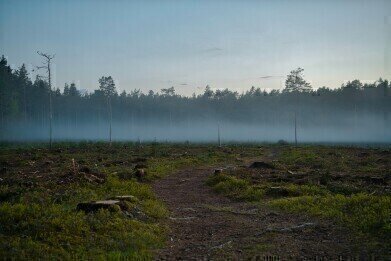Business news
What Are the Environmental Impacts of Food Production?
Nov 25 2022
The combustion of fossil fuels is often (rightly) regarded as the chief source of many negative environmental consequences, such as the emission of greenhouse gases (GHGs) and climate change. However, recent computer models have suggested that even if all combustion of oil, coal and gas was to cease tomorrow, global warming would still exceed the 1.5°C threshold agreed upon at the Paris climate summit in 2015.
That’s because food production, processing and distribution accounts for some 25% of all GHG emissions worldwide – and that figure rises to 33% when food waste is included in the equation. Climate change might be the headline consequence of food production, but it’s not the only environmental impact the industry engenders, either. We take a closer look at some of the major environmental implications of food production below.
Global warming
As mentioned above, food production is responsible for a quarter of all GHG emissions worldwide, with the majority of those consisting of methane produced by livestock. When ruminant animals eat carbonaceous matter (such as grass, feed or other organic materials), the digestive process involves the creation of volatile fatty acids which are used as an energy source by the animal. Unfortunately, it also involves the generation of methane as a by-product, which is expelled into the air by the animal.
Although livestock do account for the vast majority of methane emissions in food production, the aquaculture sector also contributes its share. In these farms, the sediment at the bottom of the water accumulates food residues and the gradual transformation of this organic matter produces methane, which can escape into the atmosphere.
Land repurposing
Many cattle and sheep farms are now situated on areas of land which used to be home to forests and jungles. This deforestation turns what was once a powerful carbon sink (since trees absorb CO2) into a potent source of GHGs (since cows, sheep and other animals emit methane). This double whammy has an outsized impact on the environment.
The same is true for aquaculture environments. Some of these systems are located in freshwater lakes, displacing the natural flora and fauna which once lived there. However, it is the aquaculture systems that have taken the place of Asian mangroves in tropical deltas and coastal regions which is the real concern, since these aquatic forests are capable of storing up to four billion tonnes of CO2, so their destruction is sorely felt.
Air pollution
Gases emitted into the atmosphere don’t just cause long-term phenomena like global warming and climate change, either. In the short term, they can have devastating effects on the air quality in local regions. The food industry, hulking behemoth that it is, is a major contributor to air pollution in the shape of CO2, black carbon, particulate matter and other harmful gases.
These are emitted into the atmosphere in a variety of ways: through the evaporation of chemicals contained in fertilisers and pesticides sprayed onto crops; through the exhaust emissions of machinery employed on farms and in processing centres; through the HGVs and lorries used to transport food and the cold storage refrigeration centres where they are kept; and through a myriad other sources throughout the food industry.
Digital Edition
IET 35.2 March
April 2025
Air Monitoring - Probe Sampling in Hazardous Areas Under Extreme Conditions - New, Game-Changing Sensor for Methane Emissions - Blue Sky Thinking: a 50-year Retrospective on Technological Prog...
View all digital editions
Events
May 10 2025 Karachi, Pakistan
May 11 2025 Vienna, Austria
May 11 2025 Seoul, South Korea
Salon Analyse Industrielle & Instrumentation
May 14 2025 Paris, France
May 15 2025 Istanbul, Turkey


.jpg)



_(4427399123)-(2).jpg)












